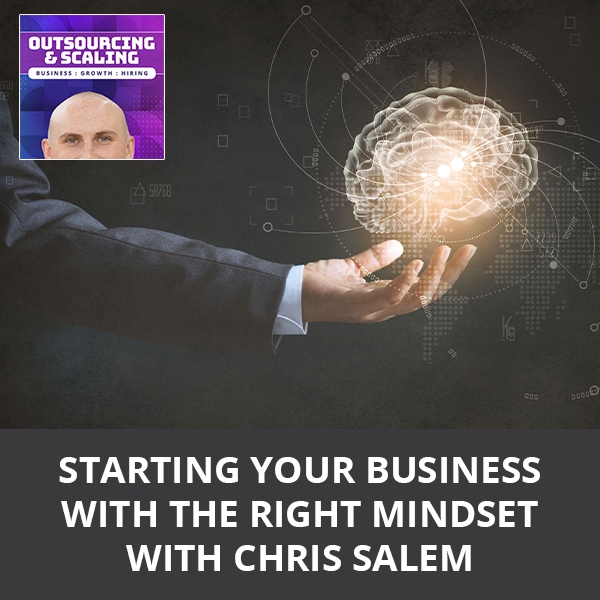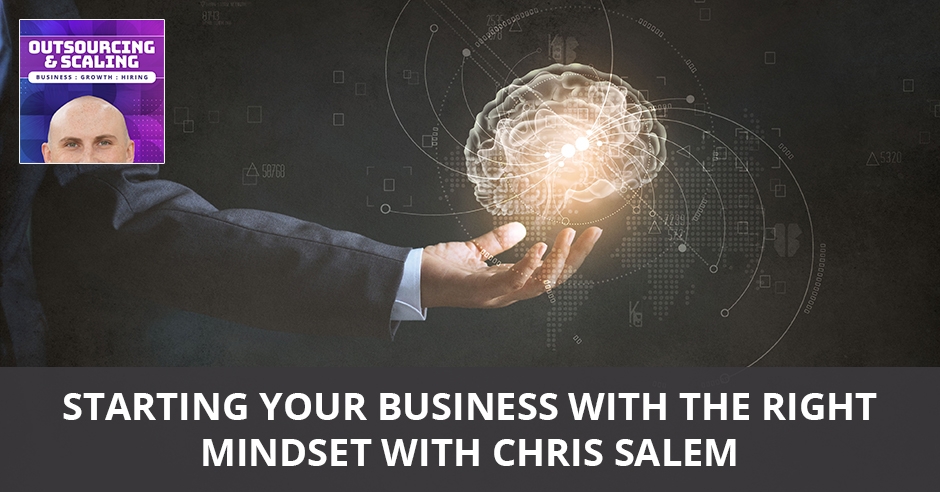


—
Listen to the podcast here:
[smart_track_player url=”https://www.podetize.com/statsapi/www.podetize.com/wp-content/uploads/fileuploads/11-5b145ef137b51b3d1af0633e9305c43d/06/2019/1c6bcbcbb555d0c6288c940eb21a5298.mp3″ title=”Starting Your Business With The Right Mindset with Chris Salem” artist=”Nathan Hirsch” image=”https://freeup.net/wp-content/uploads/2019/04/OAS.png” ]
Download the audio file here.
Starting Your Business With The Right Mindset with Chris Salem
I’m here with a friend of mine, Chris. How are you?
I’m doing great, Nathan. How are you doing?
I’m doing Great. Chris Salem is an expert at the mindset. We talked a lot about growing your Amazon business, growing a marketing agency or hiring people, but there’s a lot mentally that goes into being an entrepreneur, especially if you’re running a startup. Times can get stressful, the ups and downs. Chris, how did you get into this? Tell us a little bit about your background.
I spend the majority of my life in sales. I’m getting to understand the psychology of how people buy things and what drives them to buy things. Also, with my own personal experience, struggling with myself, not knowing my direction and always seeking validation in other people due to the fact that I had a very weak connection with my father growing up. This all led to limiting beliefs and things that interfered with my level of self-confidence of how to align my mindset to grow during times of growing my business. Flash forward, I’ve developed a process that allows people, especially entrepreneurs that are starting new businesses to develop the right mindset from a fixed mindset to a growth mindset. Building their success foundation so they’re able to go through all the trials and tribulations with a startup to get to where they want to be.
What’s the first step? Let’s say you have the idea and you’ve got whatever capital you need. Nowadays, you don’t need $500,000 a lot of times. It can be a small amount of money. You’re trying to get that minimum viable product out there. You’re trying to get feedback from clients and from your customer base. What kind of mentality do you need? How do people get started?
Meditation leads to clarity, and clarity leads you to become more decisive, which then gives you the ability to take massive action.
You want to be able to know your business, what your mission and vision is and what’s going to be required to get that started. That’s going to be all part of a business strategy and business plan itself. However, here’s where the problem is with a lot of people. They don’t look at themselves individually. They can be managing the problem or there could be limiting beliefs that are playing their role from a subconscious level that can be interfering or self-sabotaging them throughout that process. The key is in addition to knowing what you exactly have to do in this business in order to scale it, you have to look at yourself and where you are now. If where you are now and the past is not where you want it to be, then you have to be aware that there could be something blocking you subconsciously. The next step is that you accept where you are and make a commitment to the process, not only to your business but also to yourself to get to the root cause of those limited beliefs that hold you back. You may not know what they are, but there is a process to find that out that I’m happy to share with you.
Before we jump into that, do you think that there’s a difference? A difference between a twenty-year-old starting a business as opposed to a 50-year-old that might be changing careers and might have a family or a 30-year-old that’s figuring out if entrepreneurship is right for them or if they should go more to that stability? What do you see there in terms of different mindset?
It’s not necessarily a difference in mindset, but there could be a difference in the things that they’ve done over a period of time. Somebody that’s 50 years old that’s going to go from a comfortable job into entrepreneurship may experience a very difficult transition because they’ve been set in their ways for a longer period of time. Whereas somebody that was twenty years old didn’t have that experience. That experience was they came out of college or whatever they were doing right into entrepreneurship and that’s all they knew. Either way, everybody is going to go through a process to get to where they have to be. It’s having the right mindset in order to do that. It doesn’t matter what the age is, it’s a matter of that you recognize that and you’re taking action to resolve the problem at the core. It’s to create the solution or the foundation for your success with the right habits and disciplines that will allow you to scale your business during this process.
Talk to us about this process.
We won’t look at the business itself yet, but individually, it’s being aware that perhaps you’re not where you want to be. You feel like you’re not competent enough in yourself. You want to do this business, but you feel like there are certain things that could sidetrack you or you may not feel like you have the right amount of skills in order to elevate this to the next level. There’s that issue of self-confidence. It’s being aware of that and then accepting where you’re at to make a commitment to the process to get to the root cause. How do you go about doing that? It’s through a combination of different things, but I’m going to focus on three things here. It’s incorporating an organizational task that you will do every day to get your mindset focused on accomplishing something that is relatively easy to do or is obtainable.

Number two is meditation and journaling. You ask yourself, “Why would I be doing? Will I do that once in a while?” No, you’ll be doing this every day for the rest of your life if you truly want to be successful in your business and your personal life. Meditation and journaling allow you over time to be more present. When you’re in the past and the future, the past brings up past failures and that creates fear. That triggers stress that can interfere with your energy and what you’re doing to launch your business. When you project that fear into the future, that becomes anxiety on whatever level that is and that can lead to procrastination. That could also lead to self-sabotaging behaviors as well. The meditation will allow you to get present with more clarity. With that clarity, you’ll have the ability to go back to trace the root cause to your limited beliefs, which often is tied back to a parent.
You’ll know that those limited beliefs will be associated with certain negative emotions. It can be anger, jealousy, envy, shame, guilt or any combination thereof. The key is to know that when you figure out where the root cause comes from and the emotions that are aligned with it, that you want to forgive the source. If the source is alive, it’s fine. If they’re passed on, it’s no big deal. It’s energy. It’s to forgive the source, not for them but for yourself. You’ll know that you resolve the root cause of your limiting beliefs when those negative emotions that are triggered by other things won’t own you. They’ll come and they’ll go. It’s bouncing right off of you. Whereas before, they would come in and consume you. By doing that and learning how to be present, journaling allows you to do that too. Journaling allows you to write down exactly what comes to mind after meditation.
You’re not over analyzing or overthinking it so you’ll be able to look at where these issues are and how you can resolve them. That two-step approach with organizational tasks like making your bed every morning will help you to get clear, get to the root cause of your limiting beliefs and help you resolve it. With that clarity, it will lead you to become more decisive and with being more decisive, you have the ability to take massive action. It’s in that same place that you will also create your solution or your foundation to success. That’s developing the right habits and disciplines other than meditation, journaling and an organizational task. That will be necessary to do every day to take you, whatever your business strategy, is to where you want to take it. That’s the summary of that process.
What about the ups and downs of entrepreneurship? I always say that when you get to the top, you’ve got to stay humble. You never know when somebody is going to come up and hit you down. When you’re down, you’ve got to look at the bright side. Life is not over and you’ve got to work harder at it, figure it out and get back on top. For people that are at either of those points, what advice do you have for them?
You have to be humble and have gratitude every day. There’s never a day that you should not have that and here’s the reason why. There are going to be challenges but the difference is when you manage the problem, you look at the challenge or setback as something permanent. You look at it like, “Here I am getting sucked down into the problem.” Only you can allow yourself for that to happen when you manage the problem. If you come from the solution, it’s an attitude change. It’s a paradigm shift in your thinking that you look at the challenge, not in a bad way, but a good way because you’re able to see the blessings and opportunities disguised in it.
Allow your setbacks to be blessings in disguise that take you where you want to be.
When you’re able to persevere through it, even though it can be very challenging, even some days you’re like, “I can’t believe I’m doing this.” When you go through it, you’re going to be able to position yourself either further ahead than had you not gone through with it in the first place. Look at those challenges and setbacks as actual blessings. It doesn’t matter if you’re just starting out or you’re up here. Maybe there’s an economic downturn or there’s a new group of competitors that came into your space and that they’ve taken market share. It doesn’t matter. It’s staying present, staying calm, having clarity, being decisive and taking massive action. Allowing those setbacks to be blessings in disguise that take you where you want to be.
For those of you that have heard my Myrtle Beach story, it’s one of the lows of my life as an entrepreneur. Looking back, it was one of the best life lessons I could have ever had. I’m so happy that it happened in year one and two and not in year four, five, six when I wasn’t able to adjust my business based on everything that I learned. Let’s say that you are a more successful entrepreneur. Let’s say you’re a little further down the line. You’ve got decisions that you’ve got to make. Maybe those decisions are selling your business, adding a partner or it could be anything. How do you get to the right mentality to put yourself in the best position to make those decisions?
It’s being consistent and persistent with these habits and disciplines from your success foundation operating in the solution. When you do this day in and day out, it becomes embedded in your subconscious mindset. It’s on autopilot. In a fixed mindset, you do certain things without knowing what you’re doing but are they really serving you? Many times, they do not. From the process that we talked about, what’s great is not only is it positioning you to stay steady and to climb the ladder to success, but you’re also being the example for people that you’re working with. Whether they work for you directly or they’re a partner.
It can even be your customers that you’re empowering them as they observe you to maybe perhaps do that for themselves. They know they don’t know that directly, but it’s this energy they pick up on that gets people to start to look at themselves in a way to improve what they’re doing. When you start developing a team, this is the best way to lead, it’s from transparent leadership. It’s being the example of these habits and disciplines to empower others to do the same and forming an interdependent environment that will allow you to serve your customers with more value. In turn, it will keep customers keep coming back and referring new business to you.
Talk a little bit about leadership. What mistakes do you see leaders make? With leadership, all that stuff that you’re doing inside your head, you have to figure out how to get inside everyone else’s head and get the most out of them. Do you have any tips or advice there?

The thing that does not work anymore is a traditional leadership model and that is managing people. You don’t want to be managing people. You want to be managing processes and systems or resources. That’s what you should be managing. Managing people is the last thing you want to be doing. You want to be empowering people to become their own leaders. Transparent leadership is a form of leadership that allows you to do that being the example. Does that mean everybody is going to be on the same wavelength doing the same thing? No, but it’s a process.
Over time, that’s going to create a more interdependent environment. In an interdependent environment, it is positive. This is where things become more efficient, communication improves, engagement improves, morale improves, the company’s culture improves and that leads to happier customers. Does it happen overnight? No, but you have to be committed to the process. When you commit to that process, the goals and objectives that you have outlined in your business plan over a certain period of time will be the byproduct of that commitment to that process.
Chris, I appreciate you coming on. If people want to learn more and if people want your help, how can they find you?
The best place to reach me would be at my website at ChristopherSalem.com or you could reach out to me on LinkedIn or Facebook. My email is simply Chris@ChristopherSalem.com. I’d be happy to hear what you’re doing. I’d be happy to provide any advice that can help get you in the right direction.
Thanks so much for coming on and I’ll see you at the CEO Space or one of the events coming up.
Nathan, thank you for having me on.
Important Links:
- Chris Salem
- ChristopherSalem.com
- LinkedIn – Christopher Salem
- Facebook – Chris Salem
- Chris@ChristopherSalem.com
About Chris Salem
 Chris Salem is a life and business strategist, award-winning author, world-class speaker, and radio show host.
Chris Salem is a life and business strategist, award-winning author, world-class speaker, and radio show host.
